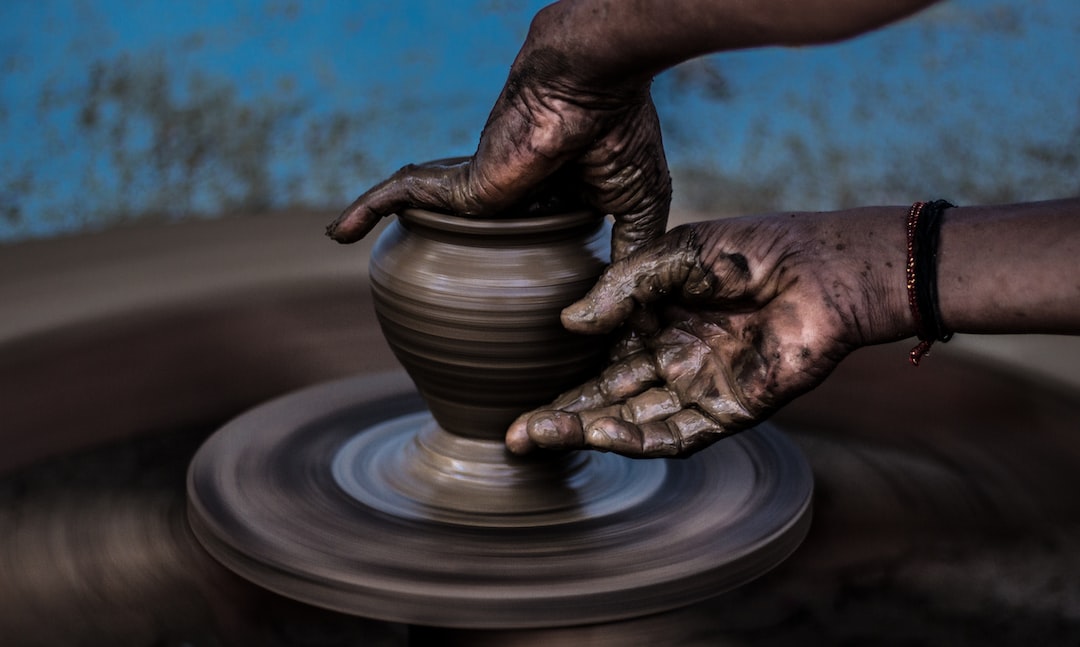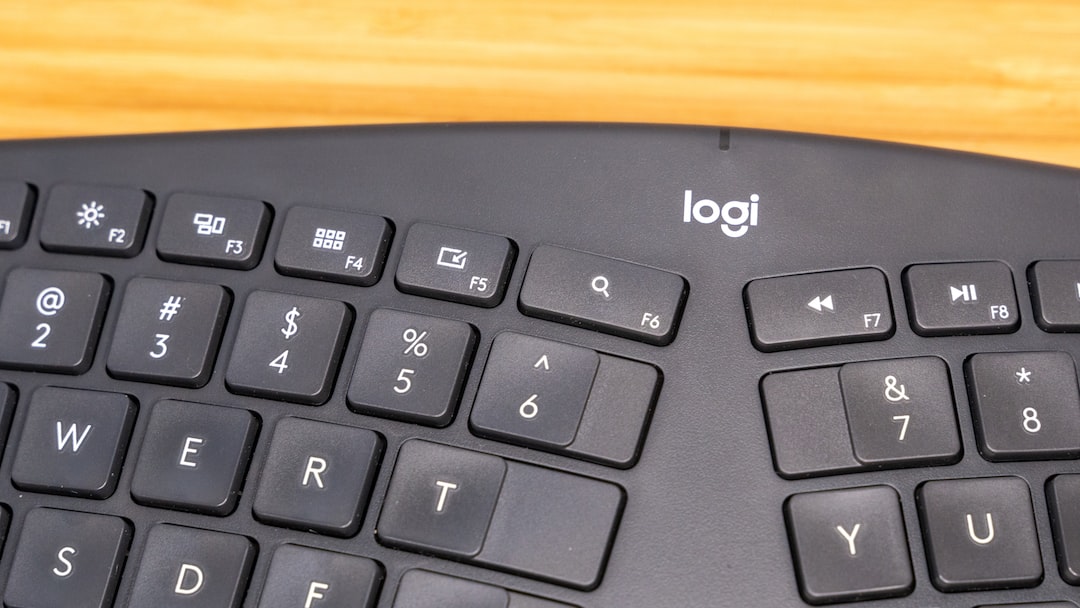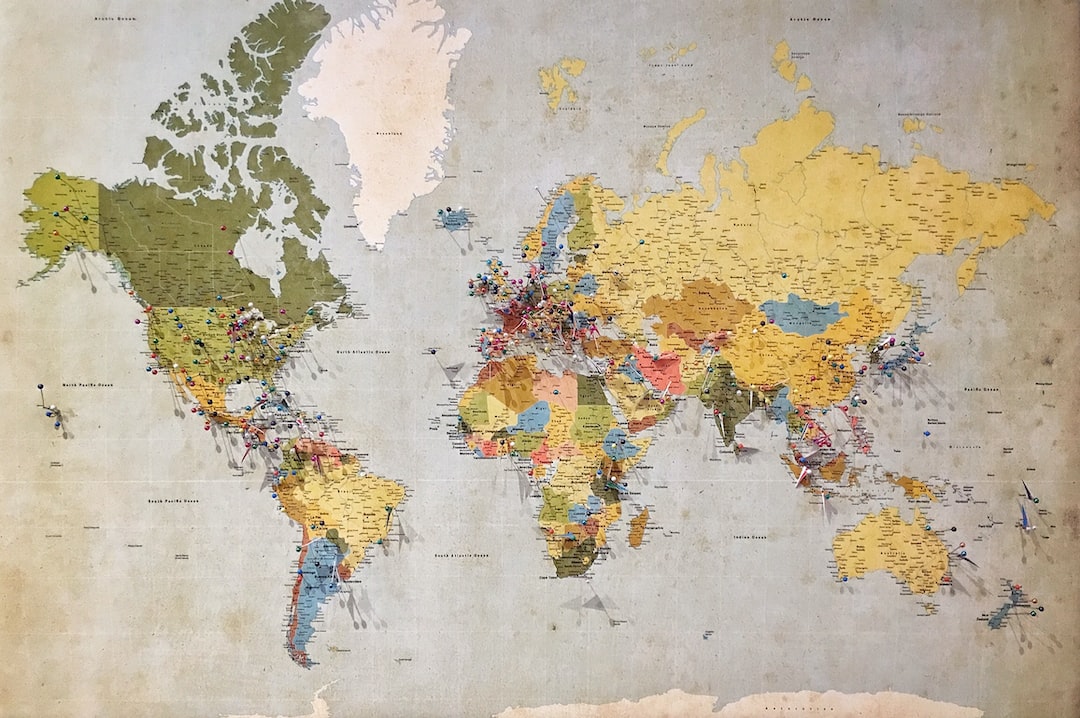If you’ve ever found yourself vibing with a logo or swooning over a piece of artwork, there’s a solid chance that the shapes within it played a massive role in that. Shapes are more than just a literal "thing"; they’re powerful symbols that hit us right in the feels. Whether you’re scrolling through the ‘Gram or checking out art in a museum, shapes are secretly working their magic on your brain. They’re sneakily influencing your thoughts, emotions, and even your decisions, all while flying under the radar. We’re going to dive into how these shapes—basic af but insanely vital—affect your perception in art and design. You’ll walk out of this read with eyes wide open and a whole new perspective on the shapes you see everywhere. 🤯
The Basics: Why Shapes Matter
First things first. Shapes set the tone. They’re the MVPs in art and design because they lay down the foundation for how everything else is going to flow. Every circle, square, line, and triangle either builds up or tears down the vibe you’re creating. Imagine putting together a puzzle. The shapes are the edges—they literally frame everything else in the piece. Whether you’re scribbling on a sketchpad or planning a full-blown design project, grabbing the right shapes can make the difference between a masterpiece and a hot mess.
Shapes help build rhythm and vibe. For real, they’re the backbone of visual storytelling. You don’t need to understand this on a deep brainy level to feel it. But if you’re in the mood to geek out, this is where it gets wild. The human mind is automatically drawn to patterns, and guess what? Patterns come from shapes. We recognize them instantly, and they trigger an instinctual reaction in our brains. This shapes how we feel about what we see—a major key as we dig deeper into the psychology behind it.
Triangles and Circles, Oh My! The basic shapes—square, circle, and triangle—each hit differently on a psychological level. It sounds extra, but it’s science. Let’s break it down, starting with triangles. Triangles are edgy, literally. They’re dynamic, full of energy, and scream "conflict" or "movement." Think about the jagged cuts in horror movie posters or a warning sign on the street. It’s all triangles, my dude. They wake up your fight-or-flight response. When you spot a triangle, your brain thinks, "Okay, something’s going down here."
Circles, on the other hand, are the ultimate chill pill of the shape world. They’re soft, welcoming, and oh-so satisfying to the eye. Ever noticed how a lot of social media icons are circles? That’s because circles deliver a sense of unity and harmony. They visually soften the blow, making intense content seem more approachable. Squares and rectangles? They scream stability. They’re the "I got you" of the shape family. Reliable and strong, squares give off major ‘trustworthy’ vibes. No joke, when you see these shapes, your brain feels at ease.
The Emo Side: Shapes and Emotions
Shapes don’t just play with your brain; they also mess with your emotional state. I know, it sounds like some Inception-level stuff, but hear me out. The way a shape is used in art or design can trigger a specific emotion or set of emotions. Ready for a deep dive? Because, damn, this gets intense.
Triangles: Sharp on Purpose
Triangles are where the wild things are. From a design angle, if you’re trying to tell a story filled with tension, conflict, or urgency, you won’t go wrong with triangles. They’re like the bad boys of shapes—edgy and always keeping you on your toes. Imagine a thriller movie poster filled with sharp, jagged triangles. You’re already feeling the suspense before you even know what the film is about. It isn’t just about the shape itself; it’s about what it does to your brain. Triangles can make you feel a mix of excitement and anxiety. No cap, they’re super powerful. Use them wisely.
But don’t get it twisted. Triangles aren’t just about danger or trouble. Flip the script and they can also symbolize power and stability. Think of a pyramid—a triangle on a pedestal that’s been viewed as a symbol of strength and longevity for centuries. When triangles are used right, they can make the viewer feel like they’re staring at a mountain, unmovable.
Circles: Soft and Steady Wins the Race
If triangles are the rebels, circles are the peacekeepers. Psychologically, this shape taps into your emotions in a completely different way. Circles lack any beginning or end, embodying the concept of infinity. That alone makes them feel complete and endless. When you see a circle, the mind perceives it as whole. No harsh edges. Nothing abrupt to disrupt the flow. The circle is calm, comforting, and inclusive.
Let’s get a bit emo for a second. Imagine the world inside a bubble. A bubble’s just a circle with a delicate balance. Circles represent that chill side of life—a state of equilibrium. They’re big in designs where inclusivity and unity are key values. That’s why you’ll often see circles in logos for nonprofits or companies that want to give off a nurturing vibe. Work some circles into your art or design when you want to instantly boost the feel-good factor.
Squares: Steadfast and Solid
Squares are the real deal. Super solid and reliable. And while they can kind of read as “boring,” don’t sleep on them. They bring a sense of order that the crazy art world sometimes lacks. Psychologically, squares do a lot to keep things grounded. Let’s say you’re designing for a brand that wants to be taken seriously. Squares and rectangles are your go-tos because they symbolize honesty, structure, and dependability. Shapes that go straight up and down scream stability. There’s no wavering here, just straight-up balance.
Here’s the tea: most forms of written language are structured in squares or rectangles (think how pages, books, signs, etc., are shaped). So when we see squares, it feels familiar, less daunting. We instantly assume that what’s inside the square is trustworthy and tested. That straight-edge perfection gives the reassuring nod, “You can count on this.” No wonder big corporations like using squares in their logos.
Shape Dynamics in Motion: When Shapes Interact
Okay so, it’s one thing to talk about shapes in isolation, but in the real world of art and design, shapes don’t exist in a vacuum. The moment you start mixing and matching, things get interesting—and complicated. You gotta think of it like a party. Sure, you can show up solo, but people generally interact, and depending on who vibes with whom, the entire scene can change. The same goes for shapes.
Shape Alignment and Balance
Alignment plays a significant role in how these shapes mess with our heads. Imagine a bunch of triangles lined up neatly. There’s still some tension, but because they’re balanced carefully, they don’t feel as hectic. But if you toss those triangles around randomly, the vibe changes dramatically. Alignment—whether everything is centered, left-aligned, or scattered—directly impacts the mood instantly. Even if you’re not conscious of it, your brain absolutely is.
Balance is the yin to alignment’s yang. A layout where shapes are symmetrically balanced tends to feel harmonious. It gives that "ah, everything’s in place" feeling. But asymmetry? That’s where the fun begins. The brain recognizes that something is off, and that small disruption keeps us on our toes. It’s all about how much you want to keep people guessing. A perfectly symmetrical design feels safe, while an asymmetrical one feels a bit daring—a bit chaotic, but in a totally engaging way.
Overlapping Shapes
Ever layered shapes on top of each other on a design app? Overlapping doesn’t just look pretty; it creates depth and suggests relationships between the elements. It can show dominance, hierarchy, or even just a chill, complex vibe. For instance, if a larger square overlaps a smaller one, your eye immediately picks up on dominance. Psychologically, it subtly signals that one thing is more important, weightier, or in control.
But overlapping shapes can also confuse the brain, in a good way. When shapes cross paths, your brain has to put in some extra work to figure out the relations between them. This can either engage the viewer more or make them feel a little uneasy, depending on how it’s done. And let’s be real, sometimes creating a design that’s just a smidge chaotic is what you need—to make people stop and think rather than just scroll past.
The Modern-Day Take: Shapes in Digital Design
We can’t talk about shapes in design without looking at how they’re used on the digital frontier. Whether it’s your favorite app, website, or even video game, shapes are wielding major power here too. And let’s keep it 💯— with everything digital nowadays, this is where most of us interact with shapes on a daily basis.
UI/UX Design: The Shape of Comfort
So if you nerd out on user interfaces or just always wonder why you can’t pull yourself away from an app, it’s got a lot to do with shape psychology in UI/UX design. Here’s the T: Designers use shapes to guide users through a digital experience. Think of bars and rectangles that provide neat, organized fields for buttons, navigation menus, and content blocks. This orderly setup makes it easy for the brain to process what you see, removing friction and making sure you don’t hit that rage-quit point.
Look at the rounded corners on an app button—that’s no happy accident. Rounded corners, rather than sharp ones, are easier on the eyes and make digital interactions feel more human and less sterile. Let’s be honest, no one likes sharp, jagged edges on anything, especially when interacting with things you use every day. Apps road-tested their designs through serious R&D because user comfort is everything, and that’s mostly shaped up by, well, shapes. 🟦 ➡️ ⚪
Gaming and Virtual Worlds: A Playground of Shapes
Heads up, gamers. If you think games are just all about storylines and epic graphics, you’re missing out on an entire under-the-hood world where shapes dictate the experience. The eye-watering vistas of games like "Zelda" or "Halo" are fueled by art directors who understand the emotional gravitas of shapes. Wide-open circles and arcs in a landscape create a relaxing space as you roam in an open-world game. Meanwhile, jagged, triangular shapes and uneven terrain in battle games like Fortnite really hype up the tension. The layout’s vibe hits right before the action does.
Shapes in games don’t just hover silently in the background either. They actively engage the player and influence the decisions you make. When you see a towering rectangular fort or a triangular cliffside, it’s not just decoration—it’s a guide, nudging you toward action, exploration, or even making you pause for a sec to check what’s around the bend. Shapes are the ultimate subliminal Google Maps, quietly steering your gameplay.
Social Media and Marketing: Shape That Story
Think about the logos of Snapchat, Instagram, and Twitter. Notice something? Circles and rounded icons are basically the streetwear of the digital world—it’s all about looking cool but approachable. Brands know that softer shapes make them seem friendlier and more relatable. But when a brand is out to show they mean business, you’ll see a lot more squares and hard edges, like in banners or profile frames. The shapes are directing the orchestra, playing on your emotions every time you tap that screen.
And let’s dive deeper into trending designs. Ever see those trippy “flat design” icons that seem to be everywhere now? They’re usually minimalist but also packed with geometric shapes. The aim is clarity—making the user’s experience straightforward, free of confusion. But, real talk, the strategic use of shapes like circles, triangles, and squares also plays a big role in giving these minimalistic icons all the depth they need to get the message across. Flat designs are minimalist, but boy do they pack a punch when it comes to hitting the right emotional notes.
Artistic Expression Through Shapes: Beyond Basic Geometry
Now that we’ve touched on how brands, products, and digital playgrounds make magic with shapes, let’s slide into something deeper—art. If design is the application of shape psychology, then art is its pure, unfiltered expression. But, no cap, some of the greatest artworks lean heavily on the same theories of shapes affecting emotions. Like, whether it’s abstract or a hyper-realistic piece, most artists use shapes to convey a mood or emotion long before color or texture hits the canvas.
The Abstract Approach
Abstract art kind of gets a bad rap. Some people are like, “Uhm, is that supposed to be a cloud or a banana?” But here’s the tea—abstract art isn’t trying to be something concrete. The shapes do the talking instead of the subject. Circles might evoke calm, juxtaposed with jarring triangles to create tension. The different shapes duke it out on the canvas, creating a visual drama that doesn’t need a recognizable subject to be impactful. The psychological impact is intentional, using shapes as a language all on their own.
Think about artists like Wassily Kandinsky, known for his synesthesia-driven compositions. He literally heard colors and shapes. Kandinsky believed that shapes had spiritual and emotional effects on viewers, which is why his works are hypnotic on an elemental level. His bold triangles, calming circles, and grounding squares interact, offering a feast of emotions instantly.
Realism with a Twist
Even the realist artists aren’t immune to shape influence. Ever seen how a carefully composed piece aligns central objects within rectangular formats? Even if it’s not evident at first, there are shapes guiding your gaze every step of the way. In classical art pieces, squares and triangles are used to build perspective, balance, and guide the viewer’s eye through the scene. Rembrandt did this all the time, keeping the viewer locked in focus on what mattered most in the story. 🎨
A lot of realist artists today integrate geometric structures subtly in their works to nudge the visual experience. They’re giving you that sense of order, balance, or intentional chaos without even needing to draw attention to it. This is kind of like a ‘hack’ that artists use to make sure their works resonate, regardless of the subject matter. Your eyes are seeing shapes before they even look at the images within them, and your brain is already drawing conclusions based on that.
Shapes That Transcend Culture
You might be thinking, “Cool, but how do shapes work across different cultures?” That’s a solid question because shapes do have universal meanings, but some cultural nuances shake things up. Cultures around the world have their own takes on shapes and what they mean, and those associations often stem from tradition, religion, and even the environment. Let’s peep into how some shapes get different spins in varying cultural contexts.
Circles in Culture 🌍
Across many cultures, circles represent the cycle of life—think Asian cultures that celebrate the dragon or yin and yang, both of which are circular symbols. The circular mandalas in Buddhist art, for example, are not just aesthetic; they’re spiritual maps guiding meditators through the journey of life. In contrast, Western culture often uses circles to symbolize unity and completeness, like wedding rings and halos over saints. There’s a cross-culture vibe here where circles are seen as classical shapes, standing for something unchanging and eternal, which can be comforting in any context.
Squares and Rectangles 🌍
In Western culture, squares often evoke a sense of stability. That’s why traditional houses, city blocks, and even legal documents are usually square or rectangle-shaped. The rectangular flag of the USA, for example, signals strength and order. Yet in some Asian cultures, squares take on spiritual meanings; Feng Shui, an ancient practice from China, often incorporates rectangles to balance energy within a space. So, the humble square can toggle between being a symbol of law and order or a tool for spiritual realignment, depending on where you’re at on the globe.
Triangles: The Global Power Play 🌍
Triangles are no doubt heavy hitters in the West too, often symbolizing power. Take the Egyptian pyramids—they are the physical embodiment of strength, representing an architectural feat that has stood the test of time. Alternatively, in Christianity, the triangle’s three sides also represent the Holy Trinity, symbolizing divine strength and protection. Flip over to India, and triangles in the context of sacred geometry like the Sri Yantra become representations of the cosmic order, taking the triangle into an entirely spiritual realm.
In modern Middle-Eastern patterns, triangles often form part of intricate designs that decorate everything from textiles to architecture. These triangles are not just for show—they’re influenced by Islamic geometric patterns that reflect the infinite nature of Allah’s creation. So, the triangle can mean vastly different things depending on its cultural setting, going from architectural marvel to a symbol of divine power.
Dive Deeper: Case Studies in Art and Design
You’re basically an expert on shape psychology now, so it’s time to flex that newfound knowledge. Let’s check out a few iconic art and design cases to see how shape dynamics play out IRL. These examples will show you how different creatives have used shapes to elevate their work to legendary status.
The Bauhaus Movement: Squares Meet Elegance 📐
Bauhaus, the German design school founded in 1919, flipped the script on design by breaking down elements to their simplest forms, often relying heavily on squares and rectangles. Bauhaus designers and artists promoted functional design, which meant that shapes like squares had to serve more than just a decorative purpose; they were essential. The heavy use of rectilinear forms echoes a sense of reliability, groundedness, and harmony, pulling from the natural draw humans have toward stable forms. Bauhaus set the tone for modern design and architecture, and even today, we’ve got Bauhaus to thank for the clean, geometric lines in everything from furniture to typography.
Pablo Picasso’s Cubist Era: A Headtrip of Shapes 🎨
No discussion about shapes in art would be complete without a shoutout to Pablo Picasso. His Cubist work is like the ultimate remix of visual reality, all propped up by the basics: circles, squares, and triangles. Picasso’s daring use of shapes helped create fractured perspectives, leading to a new way of seeing the world. Cubism was revolutionary not just for its radical departure from realistic forms but also for its emphasis on shape as a way of interpreting the complexity of life. Viewers weren’t expected to understand the world exactly as it was but rather to feel the energy that different shapes brought into play.
Apple’s Product Design: Curves That Keep It Cool 🍏
Ever noticed how Apple products are all about those smooth, rounded edges? That’s because Steve Jobs and Jony Ive knew their way around shape psychology. The ellipse-like curves on everything from iPhones to Macbooks are there for a reason. They create a sense of approachability, subtle comfort, and user-friendliness. The simple, minimalist design pairs well with the rounded corners, making the products feel inviting and easy to use. Functionality aside, the influence of those rounded corners keeps us loyal to Apple like it’s a brand we can trust and connect with on a human level. That’s some next-level shape gaming if you ask me. 💯
Nike’s Swoosh: The Power of a Single Curve 🏅
Talk about iconic—Nike’s Swoosh is one giant curve that packs an energy punch. The single, fluid motion of the Swoosh is dynamic, symbolizing speed, movement, and athletic excellence. The Swoosh design is simplicity itself, yet it conveys so much solely through its shape. It’s like the brand is saying, “We keep it moving,” all while daring you to strive for greatness. Nike’s Swoosh proves that you don’t need a bunch of complex shapes to create a strong, lasting impact—just one well-designed curve can do the trick. 🌀
FAQ Section
Now that you’ve leveled up in shape psychology, let’s hit up the FAQ section to clear out those last-minute doubts and add some final gems to your knowledge stash.
1. What psychological effect do triangles have in a design?
Triangles bring tension, urgency, and movement to a design. They’re dynamic, brimming with energy, and can create a sense of conflict or excitement. Depending on their placement and context, they can also signify power and stability.
2. Why do brands often use circular logos?
Simple. Circles evoke feelings of unity, continuity, and inclusivity. They have no sharp edges, making them visually softer, which helps brands seem more welcoming and approachable. This is why many social media platforms and non-profits opt for circular logos.
3. How do shapes influence user experience in digital design?
Shapes like rectangles and squares give structure and reliability, while rounded corners make digital spaces feel more human and accessible. The smooth, click-friendly shapes in UI/UX design ensure that the user experience remains intuitive and enjoyable.
4. Can shapes influence culture, or are they universally the same?
Shapes do have universal psychological effects, but cultural context can change their interpretation. For example, circles often signify unity and the cycle of life across most cultures, but in some, they could take on specific religious or spiritual significance.
5. What’s the role of shapes in modern art?
Shapes are the backbone of modern art, especially in movements like Cubism and Abstract Expressionism. Artists have used shapes to distort reality, introduce new perspectives, and express complex emotions without needing a clear, recognizable subject.
Sources and References 📚
- Kandinsky, W. (1977). Concerning the Spiritual in Art. Dover Publications.
- Arnheim, R. (1954). Art and Visual Perception: A Psychology of the Creative Eye. University of California Press.
- Wong, W. (1993). Principles of Form and Design. Wiley & Sons.
- ecoDesign. (1994). The Bauhaus Group: Six Masters of Modernism. Tate Publishing.
- Fry, D., & Fry, L. (2017). Visual Thinking: How to Structure your Work and Life. Basic Books.
And just like that, you’ve vibed your way through the psychology of shapes! 🎉 Your world just got a tad more fascinating, whether you’re designing for a project, appreciating art, or just staring at your phone screen. Stay woke, hit those DMs if you’ve got more questions, and keep that shape game strong! ✌️




